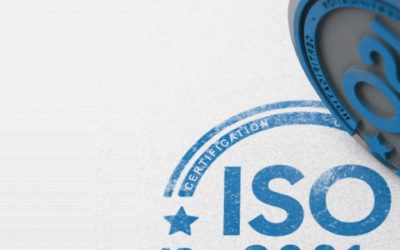ISO certification: 10 steps on how to have one
Earning certification to standards like ISO 9001 or ISO 14001 can seem intimidating. To assist those new to the implementation process, in this blog we’ve covered things step-by-step, explaining what is necessary from you, as well as your selected Certification Body..
STEP ONE: MAKE THE CORRECT CHOICE
The first thing for an enterprise is to be confident about whether the standard selected is correct for the enterprise in the present scenario. It’s important to know that before getting certified, you must have been working for at least 3 months. This is basically to assure that you have some processes in place that can be assessed.
You could speak to certified suppliers or clients, as well as using Government resources such as company link for a wealth of information on ISO standards.
STEP TWO: REVIEWING THE STANDARD
Purchasing a copy of the standard can be helpful, but isn’t essentially needed. In fact, the jargon involved can even put you off! That is why the International Organization for Standardization (ISO) has developed many handbooks which breakdown the ISO 9001 and ISO 14001 standards for making them available.
STEP THREE: COMMUNICATING THE GOAL
Execution of an ISO management system needs be to an enterprise -wide goal created by senior management. Ongoing effort will be essential to ensure good behaviors are maintained during the process, so a ‘champion’ will be required, or a dedicated panel if you work in a big establishment. This individual or panel will also be accountable for creating the real management system.
STEP FOUR: ESTABLISH TRAINING REQUIREMENTS
If you are totally new to the world of ISO standards, then a training course can be helpful to give self-assurance and authentic skills to help in the execution process. Even if you are quite skilled, a refresher course will make sure you will get the most out of the standard.
STEP FIVE: USING A CONSULTANT
It is advisable to independently source a consultant to assist you along the process. They can help with an implementation strategy, and a good consultant should add to the value of the process.
The use of a consultant doesn’t take off your responsibility for establishing and implementing your ISO management system. Therefore, it is in your own interest that you and your management are actively involved with the consultant throughout. Beware of any ‘ready-made’ management systems which may not suit your organization.
STEP SIX: SELECT A CERTIFICATION BODY
It’s significant to be familiar with what you’re signing up to when assenting to move forward with a Certification Body. The popular ISO management standards are based on a three-year cycle. Some of the Certification Bodies will be expecting you to sign up to at least a three-year contract. While an annual visit is essential, there are some who will persist seeing you more frequently. It’s important you clarify this when getting quotes and verifying for other hidden expenses such as ‘travel fees’ and ‘registration’.
STEP SEVEN: DEVELOPING A MANAGING SYSTEM
The ISO management standards are planned to be generic, relevant to organizations of all sizes and industry sectors. While the standards offer a structure for good management training, specifying tasks that is to be included, they do not notify you how to do them. As a result, there is significant liberty in meeting the requirements of the standards.
The basic part of achieving official recognition to an ISO standard is forming a managing System; a Quality Management System (QMS) for ISO 9001 and an Environmental Management System (EMS) for ISO 14001. The managing System is created of processes for management actions, provision of resources, production realization, capacity, examination and enhancement.
STEP EIGHT: THE STAGE 1 AUDIT
It starts with what’s known as the ‘Step 1 Audit’. This is when an auditor reviews your active systems and gives you a gap analysis report which will recognize the actions necessary to meet the standard. This can be used as a useful action plan, so don’t lose if you think you’re under prepared. Many enterprises find they previously have a number of necessary processes in place. They just want improved communication and documentation of what processes are compulsory and who has responsibility for what.
STEP NINE
Once you are set and have filled the gaps figured out in the Stage 1 report, an auditor will call you again to carry out what’s known as the ‘Stage 2 Audit’. This will disclose the efficiency of your managing system and if it meets all the requirements of the specific ISO standard you hope to be certified to (e.g. ISO 9001 and/or ISO 14001). If you are totally compliant, you would be recommended for certification. The auditor’s report will then be checked using an approvals process and if no anomaly is recognized, your organization gets officially certified.
STEP TEN: MAINTAINING YOUR MANAGEMENT SYSTEM
The maintenance of your management system is where the hard work actually starts. Sustained buy-in from everybody is important for execution to succeed, and for you to get the true benefit of being certified.
In-house communication as well as training must be carried out usually to ensure ongoing engagement with staff. Also, internal audits should also be accepted out to ensure the needs of the standard are frequently met. A management review should then be held to set out corrective actions as required.



